INSTITUT SUPERIEUR D'ANTHROPOLOGIE
INSTITUT OF ANTHROPOLOGY
COURS ONLINE – COURS A DISTANCE
INSCRIPTIONS OUVERTES
REGISTER NOW
TURQUIE – 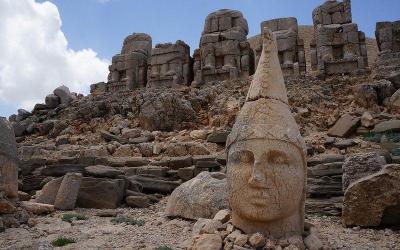 Nemrut - Last year, “nano lime” was filled with syringes to protect the tiny cracks on the large stone statues on Mount Nemrut in Adıyaman, located in the southeastern region of Turkey, and now authorities announced that the application has given positive results. The statues have been standing on the east and west terraces of the 2,150-meter-high tumulus for more than 2,000 years. The lime filling was prepared last year using nanotechnology in the cracks of the statues, which had been worn down due to natural conditions for centuries. Gaziantep Restoration and Conservation Regional Laboratory Director Ayşe Ebru Çorbaşı and the restorers filled the body and sandstone of the Eagle statue on the East terrace, and the feet and sandstone of Herakles, the son of Zeus, on the West terrace. After waiting one-year, the examinations show that nano lime protected the sculptures. Now it is planned to carry out the same work on other statues.
Nemrut - Last year, “nano lime” was filled with syringes to protect the tiny cracks on the large stone statues on Mount Nemrut in Adıyaman, located in the southeastern region of Turkey, and now authorities announced that the application has given positive results. The statues have been standing on the east and west terraces of the 2,150-meter-high tumulus for more than 2,000 years. The lime filling was prepared last year using nanotechnology in the cracks of the statues, which had been worn down due to natural conditions for centuries. Gaziantep Restoration and Conservation Regional Laboratory Director Ayşe Ebru Çorbaşı and the restorers filled the body and sandstone of the Eagle statue on the East terrace, and the feet and sandstone of Herakles, the son of Zeus, on the West terrace. After waiting one-year, the examinations show that nano lime protected the sculptures. Now it is planned to carry out the same work on other statues.
‘Nano lime’ protects Nemrut: Throne of the Gods - Arkeonews
IRAN –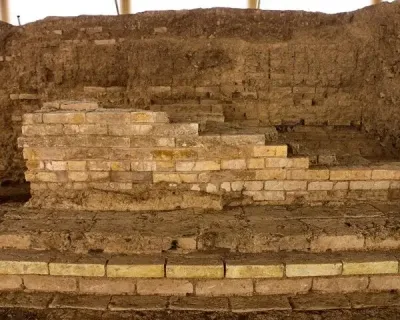
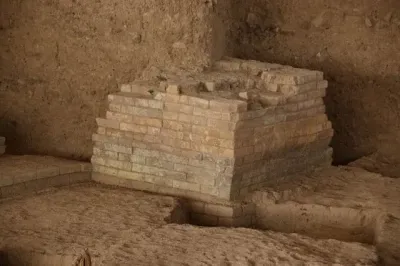 Persepolis - A new find at Persepolis, whose magnificent ruins rest at the foot of Kuh-e Rahmat (Mount of Mercy) in southwestern Iran, reveals the eastern wall of a large prehistoric gateway believed to have been constructed upon the order of Cyrus the Great. Persepolis, founded by Darius I in 518 B.C., was the capital of the Achaemenid Empire. It was constructed on a massive half-artificial, half-natural terrace, on which the king of kings erected an impressive palace complex based on Mesopotamian models. The discovery was made in a site known as Tall-e Ajori, which has been subject to archaeological work over the past decade. The monumental structure once provided access to a royal garden known as “Paradise,” which included a grand palace that now lies in ruins at the Firuzabad site. Adorned with striking glazed bricks, the astonishing structure, also referred to as the Gate of Cyrus, is constructed entirely from a combination of bricks and tiles. It spans an impressive 40 meters in length, and 10 meters in width, and boasts a substantial thickness of five meters. One of the charming construction techniques employed in the creation of the structure is the extensive use of bitumen mortar, Mehr reported.
Persepolis - A new find at Persepolis, whose magnificent ruins rest at the foot of Kuh-e Rahmat (Mount of Mercy) in southwestern Iran, reveals the eastern wall of a large prehistoric gateway believed to have been constructed upon the order of Cyrus the Great. Persepolis, founded by Darius I in 518 B.C., was the capital of the Achaemenid Empire. It was constructed on a massive half-artificial, half-natural terrace, on which the king of kings erected an impressive palace complex based on Mesopotamian models. The discovery was made in a site known as Tall-e Ajori, which has been subject to archaeological work over the past decade. The monumental structure once provided access to a royal garden known as “Paradise,” which included a grand palace that now lies in ruins at the Firuzabad site. Adorned with striking glazed bricks, the astonishing structure, also referred to as the Gate of Cyrus, is constructed entirely from a combination of bricks and tiles. It spans an impressive 40 meters in length, and 10 meters in width, and boasts a substantial thickness of five meters. One of the charming construction techniques employed in the creation of the structure is the extensive use of bitumen mortar, Mehr reported.
A new finding in Persepolis reveals a Royal wall - Arkeonews
PEROU – 
 Ampato - Archaeologists have revealed a model showing what Peru's most famous mummy would have looked like. The mummy, known as "Juanita" or the "Inca Ice Maiden", was an Inca girl who is thought to have been sacrificed in a ritual more than 500 years ago. Scientists worked with a specialist in facial reconstruction to build a silicon bust of the mummy. The scientists said body scans, skull measurements, DNA studies and ethnological characteristics guided their reconstruction. Dr Reinhard and Peruvian mountaineer Miguel Zárate found Juanita's frozen body at an altitude of 6,400m (21,000ft) during an expedition to the Ampato volcano. She was wearing a ceremonial tunic and a headpiece and was surrounded by ceramic objects including bowls and figurines. Studies carried out on the body suggest Juanita was between 14 and 15 years old when she was sacrificed. A CT scan by researchers at Johns Hopkins University found that the probable cause of death was a severe blow to the back of her head. Experts think that she may have been drugged and made to kneel before she was hit over the head with something which may have resembled a truncheon in a human sacrifice to the gods In an article in Penn Museum's Expedition Magazine, Dr Reinhard explained that according to the Inca belief system "such a sacrifice brought honour on the parents and an afterlife of bliss for the victims". "The child would become deified and worshipped for generations as the villagers' intermediary with the gods."
Ampato - Archaeologists have revealed a model showing what Peru's most famous mummy would have looked like. The mummy, known as "Juanita" or the "Inca Ice Maiden", was an Inca girl who is thought to have been sacrificed in a ritual more than 500 years ago. Scientists worked with a specialist in facial reconstruction to build a silicon bust of the mummy. The scientists said body scans, skull measurements, DNA studies and ethnological characteristics guided their reconstruction. Dr Reinhard and Peruvian mountaineer Miguel Zárate found Juanita's frozen body at an altitude of 6,400m (21,000ft) during an expedition to the Ampato volcano. She was wearing a ceremonial tunic and a headpiece and was surrounded by ceramic objects including bowls and figurines. Studies carried out on the body suggest Juanita was between 14 and 15 years old when she was sacrificed. A CT scan by researchers at Johns Hopkins University found that the probable cause of death was a severe blow to the back of her head. Experts think that she may have been drugged and made to kneel before she was hit over the head with something which may have resembled a truncheon in a human sacrifice to the gods In an article in Penn Museum's Expedition Magazine, Dr Reinhard explained that according to the Inca belief system "such a sacrifice brought honour on the parents and an afterlife of bliss for the victims". "The child would become deified and worshipped for generations as the villagers' intermediary with the gods."
Archaeologists reveal face of Peru's 'Ice Maiden' mummy - BBC News
PORTUGAL– 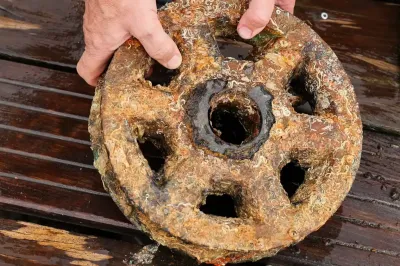 Lagos - An archaeological campaign carried out in the bay of Lagos between October 9 and 20 has uncovered two bronze pulleys that are around 300 years old, with more underwater treasures still waiting to be recovered. After almost five hours at sea, a team of divers from the National Centre for Nautical and Underwater Archaeology (CNANS), together with partners from the Norwegian Maritime Museum, managed to retrieve the two pieces, despite the adverse weather conditions. The pulleys are believed to have belonged to an 18th-century vessel and were used to carry goods via cables, archaeologist Gonçalo Lopes, who is coordinating the latest sea campaign carried out under the “Water World” project, told Lusa news agency. The divers also found a lead stump belonging to a Roman anchor dating from between the 4th century BC and the 2nd century AD, which was not recovered due to the bad weather at the time.
Lagos - An archaeological campaign carried out in the bay of Lagos between October 9 and 20 has uncovered two bronze pulleys that are around 300 years old, with more underwater treasures still waiting to be recovered. After almost five hours at sea, a team of divers from the National Centre for Nautical and Underwater Archaeology (CNANS), together with partners from the Norwegian Maritime Museum, managed to retrieve the two pieces, despite the adverse weather conditions. The pulleys are believed to have belonged to an 18th-century vessel and were used to carry goods via cables, archaeologist Gonçalo Lopes, who is coordinating the latest sea campaign carried out under the “Water World” project, told Lusa news agency. The divers also found a lead stump belonging to a Roman anchor dating from between the 4th century BC and the 2nd century AD, which was not recovered due to the bad weather at the time.
300-year-old underwater treasures found in Lagos - Portugal Resident
IRAK – 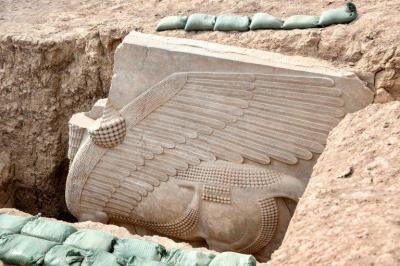 Khorsabad, - A dig in northern Iraq has unearthed a 2,700-year-old alabaster sculpture of the winged Assyrian deity Lamassu, which was found largely intact despite its large dimensions. Only the head was missing Butterlin said of the 18-tonne sculpture measuring 3.8 by 3.9 metres (about 12.5 by 12.8 feet). The sculpture was erected to provide protection at the gates of the ancient city of Khorsabad, the Assyrian capital during the reign of King Sargon II in the eighth century BC .
Khorsabad, - A dig in northern Iraq has unearthed a 2,700-year-old alabaster sculpture of the winged Assyrian deity Lamassu, which was found largely intact despite its large dimensions. Only the head was missing Butterlin said of the 18-tonne sculpture measuring 3.8 by 3.9 metres (about 12.5 by 12.8 feet). The sculpture was erected to provide protection at the gates of the ancient city of Khorsabad, the Assyrian capital during the reign of King Sargon II in the eighth century BC .
RTL Today - Unique discovery : Iraq dig unearths 2,700-year-old winged sculpture largely intact
CHINE - Recent archaeological excavations across China have revealed an array of artifacts that shed light on the extensive multicultural interactions in the country's ancient history. These findings, presenting a mosaic of diversified cultural elements, were a focal point at the 4th Congress of Chinese Archaeology held in Xi'an in northwest China's Shaanxi Province from Monday to Wednesday. At the event, researchers from the Shaanxi Academy of Archaeology shared insights into the latest discoveries in tombs of the Western Han Dynasty (202 B.C.-25 A.D.). Notably, in a royal mausoleum hundreds of gold artifacts adorned with grassland-related motifs were unearthed."These artifacts underscore the pre-Silk Road interactions between the central plain areas of China and the grassland areas, serving as direct evidence of cultural exchanges during the pre-Qin Dynasty (221 B.C.-207 B.C.) and Han Dynasty (202 B.C.-220 A.D.) periods," said Ma Yongying, a researcher at the Shaanxi Academy of Archaeology. This intricate interplay of diverse cultures is a consistent theme throughout China's historical tapestry, archaeologists noted. Wang Ying, associate researcher at the Institute of Archaeology, Chinese Academy of Social Sciences, said that the Shangjing site, dating back to the Liao Dynasty (907-1125), presents a reflection of nomadic Khitan customs alongside the adoption of central plains traditions. Shangjing, the former imperial city of the Liao Dynasty, though facing east -- reflecting the Khitan people's distinct custom of "revering the east" -- primarily adopts a layout of multiple concentric enclosures and axial symmetry, which is an architectural style commonly found in the central plain areas. Revelations at the site of Chang'an city dating back to the Tang Dynasty (618-907) include high-nosed, deep-eyed figurines with thick beards, indicating the diverse ethnicities back then and hinting at historical ties between China and regions in Central and Western Asia. In recent years, the archaeological community in China has continuously achieved new discoveries that shed light on multicultural exchanges. One such site in Shangyi, north China's Hebei Province, known as the Sitai relics site, testifies to some of the earliest village settlements in northern China. Remarkably, pottery found there shares stylistic similarities with artifacts from the Lake Baikal region in Russia, indicating past interactions with distant northern cultures. The 2021 excavations at Ta'erpo Village in the city of Xianyang, Shaanxi, have also drawn attention, with 47 sets of gold, bronze, and pottery objects discovered. "The gold ornaments, featuring gold beads welded with gold wire, reflect early contact between the Qin people and Central and Western Asia. These are critical to exploring pre-Silk Road intercultural communications," said Sun Zhouyong, head of the Shaanxi Academy of Archaeology. In Xinjiang's Qitai County, archaeologists have discovered the ruins of an ancient Romanesque bathhouse with a "heated floor" system within the Tangchaodun ancient city, which was first built in the early Tang Dynasty. The ruins, aside from its distinctive Romanesque layout, integrate traditional Chinese wall paintings, showcasing a blend of local and foreign artistry. At the conference, archaeologists noted that key archaeological projects undertaken in recent years have reconstructed the interactions within various regions of China and with cultures beyond, reiterating the inclusiveness and continuity of Chinese civilization.
China Focus: Archaeological findings unveil multicultural exchanges tapestry in ancient China-Xinhua (news.cn)
FRANCE – 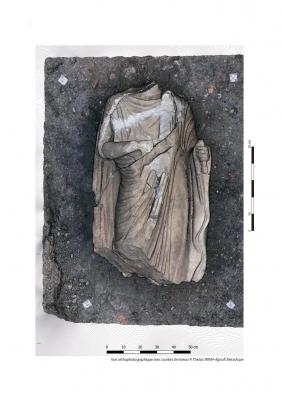
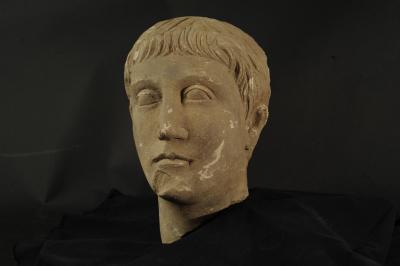 Briord - L’agglomération antique de Briord, Brioratis, occupe une position privilégiée en rive droite du Rhône permettant la circulation par voie fluviale et terrestre entre Lyon et Genève. Elle est installée sur la basse terrasse d’une plaine alluviale relativement étroite mais abritée des crues (sauf exceptionnelles) malgré la crise hydrologique ayant touché le bassin de Malville entre le milieu du Ier et la fin du IIe siècle après J.-C. L’agglomération antique est identifiée dès le XVIe siècle par le lapidaire et l’épigraphie mais ce n’est qu’à partir des années 1950 que les premières interventions archéologiques sont entreprises par la Société d’Histoire et d’Archéologie de Briord et des Environs (SHABE) avec la fouille notable de la nécropole des Plantées. Des opérations préventives de diagnostic se déroulent à partir des années 2000, mais restent éloignées ou en périphérie du bourg. Ce n’est qu’en 2018 au lieu-dit Le Cimetière, au nord-ouest de Briord, qu’un diagnostic permet de découvrir une voie antique orientée vers le centre du village et révèle les prémices d’une trame urbaine. Avec le site des Ecolus, découvert en 2020, situé encore plus près du cœur du village, c’est un quartier antique densément bâti qui est mis au jour avec un ensemble de maçonneries, de sols, mais aussi deux bassins et un hypocauste (système de chauffage par le sol) partiellement dégagés. Au sud et en contrebas de la voie, les installations sont plus légères et reposent sur des poteaux de bois accompagnant des niveaux de sols, des puits. Le site, s’étant développé à partir de la voie installée dès le début du Ier siècle, présente des vestiges du Ier au IIIe siècle apr. J.-C., alors que le IVe siècle marque un net retrait de l’occupation. Une statue calcaire d’homme en toge a été dégagée dans les déblais bordant la voie antique. Son prélèvement a été relativement délicat compte tenu de son poids dépassant les 200 kg et de son état avec un corps présentant de nombreuse fissures. L’utilisation de la photogrammétrie a permis la manipulation et l’étude à distance de cet objet fragile nécessitant une restauration. Ce togatus (dans la Rome antique, togatus signifie qui porte la toga (toge), ce qui implique la citoyenneté romaine) représente un notable dont le portrait aux traits idéalisés est celui d’un homme jeune et imberbe reprenant les codes impériaux de l’époque de Tibère à Claude. Il provient vraisemblablement d’un édifice funéraire inconnu à ce jour.
Briord - L’agglomération antique de Briord, Brioratis, occupe une position privilégiée en rive droite du Rhône permettant la circulation par voie fluviale et terrestre entre Lyon et Genève. Elle est installée sur la basse terrasse d’une plaine alluviale relativement étroite mais abritée des crues (sauf exceptionnelles) malgré la crise hydrologique ayant touché le bassin de Malville entre le milieu du Ier et la fin du IIe siècle après J.-C. L’agglomération antique est identifiée dès le XVIe siècle par le lapidaire et l’épigraphie mais ce n’est qu’à partir des années 1950 que les premières interventions archéologiques sont entreprises par la Société d’Histoire et d’Archéologie de Briord et des Environs (SHABE) avec la fouille notable de la nécropole des Plantées. Des opérations préventives de diagnostic se déroulent à partir des années 2000, mais restent éloignées ou en périphérie du bourg. Ce n’est qu’en 2018 au lieu-dit Le Cimetière, au nord-ouest de Briord, qu’un diagnostic permet de découvrir une voie antique orientée vers le centre du village et révèle les prémices d’une trame urbaine. Avec le site des Ecolus, découvert en 2020, situé encore plus près du cœur du village, c’est un quartier antique densément bâti qui est mis au jour avec un ensemble de maçonneries, de sols, mais aussi deux bassins et un hypocauste (système de chauffage par le sol) partiellement dégagés. Au sud et en contrebas de la voie, les installations sont plus légères et reposent sur des poteaux de bois accompagnant des niveaux de sols, des puits. Le site, s’étant développé à partir de la voie installée dès le début du Ier siècle, présente des vestiges du Ier au IIIe siècle apr. J.-C., alors que le IVe siècle marque un net retrait de l’occupation. Une statue calcaire d’homme en toge a été dégagée dans les déblais bordant la voie antique. Son prélèvement a été relativement délicat compte tenu de son poids dépassant les 200 kg et de son état avec un corps présentant de nombreuse fissures. L’utilisation de la photogrammétrie a permis la manipulation et l’étude à distance de cet objet fragile nécessitant une restauration. Ce togatus (dans la Rome antique, togatus signifie qui porte la toga (toge), ce qui implique la citoyenneté romaine) représente un notable dont le portrait aux traits idéalisés est celui d’un homme jeune et imberbe reprenant les codes impériaux de l’époque de Tibère à Claude. Il provient vraisemblablement d’un édifice funéraire inconnu à ce jour.
Actualité | Premières traces d’urbanisme et découverte d�... | Inrap
FRANCE –  Beaupréau-en-Mauges - L’atelier de Beaupréau a produit des matériaux en terre cuite pendant quelques décennies tout au plus, probablement dans la seconde moitié du XIIe siècle. Le site est principalement structuré par un enclos ovoïde d’une vingtaine de mètre de diamètre, dans lequel un bâtiment est installé : il est organisé en deux espaces distincts et accueille une cave de 2,85 m de profondeur, desservie par un escalier taillé dans l’argile. L’enclos et son bâtiment sont caractéristiques des habitats du Moyen Âge central régionaux. L’activité tuilière s’effectuait principalement en dehors de l’enclos : elle est caractérisée par une zone d’extraction, un four avéré, ainsi qu’un possible bâtiment annexe. Elle a toutefois aussi pu se dérouler en partie à l’intérieur de l’enclos, comme l’atteste la présence d’une motte d’argile stockée dans la cave. Le four n’a été découvert que démantelé et rejeté dans la fosse d’extraction principale. Sa base était construite en gros blocs de quartzite et en tuiles, tandis que sa voûte était armée avec des files juxtaposées de pots emboités ; le tout était assemblé et enduit par de l’argile, dont de très nombreux restes portant des empreintes de pots et de tuiles. Ce four a produit à 99 % des tuiles creuses à crochet utilisées sur des toitures à forte pente, mais également quelques tuiles de faîtage à boutons. Plus étonnantes sont les dérivés de tegulae, longues mais étroites tuiles à rebords. Des grandes briques épaisses, du type de celles utilisées pour les soles de fours à pain, ont aussi été produites. Des briques rondes ou demi-rondes à la fonction indéterminée ont fait l’objet d’un traitement décoratif particulier : elles sont couvertes d’une estampille représentant un loup à queue en panache, qu’accompagne un semis de poinçons cruciformes. Le cartouche se retrouve également sur certains rebords de tegulae en file continue, et positionné dans des angles de brique en « signature » d’atelier.
Beaupréau-en-Mauges - L’atelier de Beaupréau a produit des matériaux en terre cuite pendant quelques décennies tout au plus, probablement dans la seconde moitié du XIIe siècle. Le site est principalement structuré par un enclos ovoïde d’une vingtaine de mètre de diamètre, dans lequel un bâtiment est installé : il est organisé en deux espaces distincts et accueille une cave de 2,85 m de profondeur, desservie par un escalier taillé dans l’argile. L’enclos et son bâtiment sont caractéristiques des habitats du Moyen Âge central régionaux. L’activité tuilière s’effectuait principalement en dehors de l’enclos : elle est caractérisée par une zone d’extraction, un four avéré, ainsi qu’un possible bâtiment annexe. Elle a toutefois aussi pu se dérouler en partie à l’intérieur de l’enclos, comme l’atteste la présence d’une motte d’argile stockée dans la cave. Le four n’a été découvert que démantelé et rejeté dans la fosse d’extraction principale. Sa base était construite en gros blocs de quartzite et en tuiles, tandis que sa voûte était armée avec des files juxtaposées de pots emboités ; le tout était assemblé et enduit par de l’argile, dont de très nombreux restes portant des empreintes de pots et de tuiles. Ce four a produit à 99 % des tuiles creuses à crochet utilisées sur des toitures à forte pente, mais également quelques tuiles de faîtage à boutons. Plus étonnantes sont les dérivés de tegulae, longues mais étroites tuiles à rebords. Des grandes briques épaisses, du type de celles utilisées pour les soles de fours à pain, ont aussi été produites. Des briques rondes ou demi-rondes à la fonction indéterminée ont fait l’objet d’un traitement décoratif particulier : elles sont couvertes d’une estampille représentant un loup à queue en panache, qu’accompagne un semis de poinçons cruciformes. Le cartouche se retrouve également sur certains rebords de tegulae en file continue, et positionné dans des angles de brique en « signature » d’atelier.
Actualité | Un atelier de tuileries médiévales à Beaupréa... | Inrap
FRANCE –  Bolquère - Bolquère est un village des montagnes de Cerdagne. La Creu, proche du centre du village, est perchée à 1620 m d’altitude et est environnée de sommets atteignant ou dépassant les 2000 m. La fouille se situe sur le flanc méridional du massif granitique du Carlit, plus précisément sur un versant orienté au sud, une « soulane », qui se compose d’une pente régulière et d’un replat en contrebas. Celui-ci renfermait une zone humide : deux couches très hydromorphes, évoquant un marécage, encadrent un niveau de véritable mare matérialisé par des limons argileux de décantation. Les traces humaines anciennes ne se composent que de structures en creux, fosses et trous de poteau/piquet. Celles contenant de la céramique non tournée sont assurément attribuables au Néolithique/âge du Bronze. La fouille de 2018 et surtout le diagnostic de 2022 ont donné des dates Carbone 14 remontant au Mésolithique, entre 8500 et 6500 avant notre ère. Cependant, sur le terrain, il n’est pas possible d’identifier les structures qui peuvent s’y rapporter en l’absence de mobilier dans la plupart d’entre elles. Les rares éléments lithiques récoltés sont fabriqués dans des matériaux locaux, des quartz et des aplites filoniens de mauvaise qualité : il n’y a donc aucun outillage ou armature en silex qui attesteraient cette période directement.
Bolquère - Bolquère est un village des montagnes de Cerdagne. La Creu, proche du centre du village, est perchée à 1620 m d’altitude et est environnée de sommets atteignant ou dépassant les 2000 m. La fouille se situe sur le flanc méridional du massif granitique du Carlit, plus précisément sur un versant orienté au sud, une « soulane », qui se compose d’une pente régulière et d’un replat en contrebas. Celui-ci renfermait une zone humide : deux couches très hydromorphes, évoquant un marécage, encadrent un niveau de véritable mare matérialisé par des limons argileux de décantation. Les traces humaines anciennes ne se composent que de structures en creux, fosses et trous de poteau/piquet. Celles contenant de la céramique non tournée sont assurément attribuables au Néolithique/âge du Bronze. La fouille de 2018 et surtout le diagnostic de 2022 ont donné des dates Carbone 14 remontant au Mésolithique, entre 8500 et 6500 avant notre ère. Cependant, sur le terrain, il n’est pas possible d’identifier les structures qui peuvent s’y rapporter en l’absence de mobilier dans la plupart d’entre elles. Les rares éléments lithiques récoltés sont fabriqués dans des matériaux locaux, des quartz et des aplites filoniens de mauvaise qualité : il n’y a donc aucun outillage ou armature en silex qui attesteraient cette période directement.
Actualité | Fréquentation au Mésolithique et au Néolithiqu... | Inrap